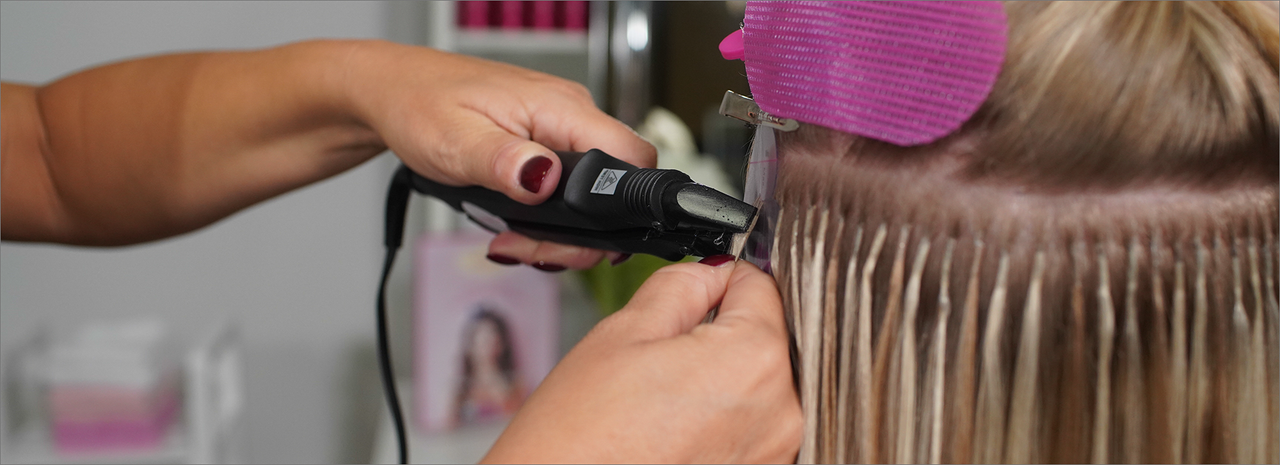Last week we talked about how easy it is to master Flat-Tip with existing I-Tip resources. But that kind of begs the question: what exactly is the difference between Flat-Tip and I-Tip? Even though both of these methods are installed with the same general tactics and tools, they ultimately achieve somewhat different end results, and you can benefit from knowing those differences when it comes time to match your client with their ideal method. So let’s dive into the details.
Flat-Tip is a hybrid method.
While I-Tip is one of our classic, core three hair extension methods (alongside Fusion and Tape-In), Flat-Tip is a mix of two of those methods. Flat-Tip exists at the intersection of I-Tip and Tape-In, bearing the aglet-like tip of an I-Tip strand with the hair extension spread of a Tape-In weft. This is critical, because strands and wefts have totally different feels to them. So the fact that Flat-Tip is both a strand and a weft means that it boasts the advantages of both types—namely, the chemical-free installation and 360 degree movement of a strand, plus the flat comfort and greater hair distribution of a weft.
I-Tip is all strand.
While I-Tip and Flat-Tip share the traits of chemical-free installation and 360 degree movement, unlike Flat-Tip, I-Tip does not lay against the hair in flat strips. This means that the hair in I-Tip extensions does not spread as much as the hair in Flat-Tip extensions, and cannot achieve quite the same level of overall lightness (otherwise you risk the extensions looking stringy!). On the flip side, though, this also means that you can achieve slightly more volume with I-Tip extensions, since they do not lay flat against the hair and can be placed closer together.
Their installation is not exactly the same.
As we mentioned in that last point, Flat-Tip and I-Tip installation will differ with regard to extension placement, in that Flat-Tip extensions should be positioned at a slightly greater distance from each other than I-Tip extensions. Again, this is because of the weft-like nature of Flat-Tip extensions, which spreads the hair from an extension strand to a wider surface area. While this difference may seem pretty minimal, it can actually have a big effect on your installation process, since you’ll have to pay attention not only to the spacing of the beads, but also to the spacing of the weft part of the Flat-Tip extensions, making sure they don’t overlap any of the other extensions.
They provide different types of flexibility to the client.
Both I-Tip and Flat-Tip allow for easy, natural hair movement thanks to their strand-by-strand installation, but they provide slightly different kinds of flexibility with different kinds of movements. I-Tip lends itself well to flexible hair styling—like up-dos, side buns, and high ponytails—since the cylindrical I-Tip strand blends perfectly into the circular shape of the natural hair section. Flat-Tip extensions can be worn in all the same styles as I-Tip extensions, of course, but you may have to take extra care to ensure that the corners of the Flat-Tip weft don’t poke out of the hairdo, depending on how you’re styling it. Flat-Tip, however, blends seamlessly into loose hair, not just in terms of appearance, but also in terms of experience. The weft part of the extension rests flat against the client’s scalp, mirroring the smoothness of the natural hair.
Both I-Tip and Flat-Tip are wonderful choices for almost any client, but they aren’t exactly alike! Do you use either of these methods in your salon? Tell us your experience in the comments below! And don’t forget to take advantage of our July-August promotion—10% off all Flat-Tip hair! Available until August 31, 2016 at your local distributor.

